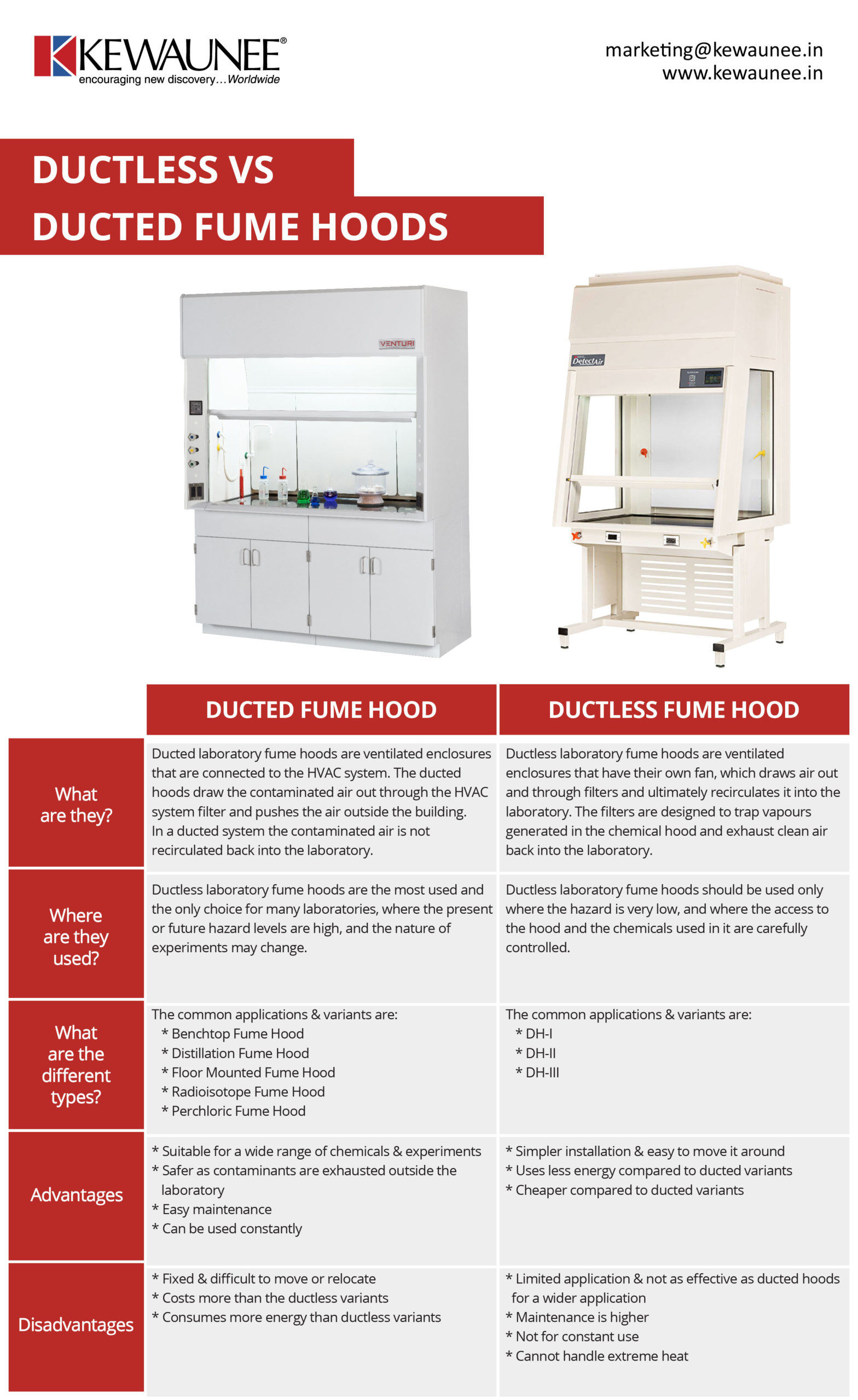Ductless Vs Ducted Fume Hoods
Fume hoods are a critical part of any laboratory that deals with hazardous or toxic chemicals and it’s an essential requirement to have. They’re local ventilation devices that help protect the user from any hazardous material in the laboratory. Fume hoods protect lab users by containing vapours, dusts, and gases generated within the hood. Fume hoods remove the fumes as air flows into the hood and then out via the laboratory exhaust system.
One of the questions we often encounter is, whether the choose a traditional ducted fume hood or go for the ductless hoods. It’s a good question to explore during the lab design and planning stage, as both the options have their advantages and drawbacks.
Let’s explore the key features, uses, and pros’ and cons’ of both the options in this blog.
| DUCTED FUME HOOD | DUCTLESS FUME HOOD | |
|---|---|---|
| What are they? | Ducted laboratory fume hoods are ventilated enclosures that are connected to the HVAC system. The ducted hoods draw the contaminated air out through the HVAC system filter and pushes the air outside the building. In a ducted system the contaminated air is not recirculated back into the laboratory. | Ductless laboratory fume hoods are ventilated enclosures that have their own fan, which draws air out and through filters and ultimately recirculates it into the laboratory. The filters are designed to trap vapours generated in the chemical hood and exhaust clean air back into the laboratory. |
| Where are they used? | Ductless laboratory fume hoods are the most used and the only choice for many laboratories, where the present or future hazard levels are high, and the nature of experiments may change. | Ductless laboratory fume hoods should be used only where the hazard is very low, and where the access to the hood and the chemicals used in it are carefully controlled. |
| What are the different types? | The common applications & variants are:
|
The common applications & variants are:
|
| Advantages |
|
|
| Disadvantages |
|
|
Talk to our experts who’ll help you design and plan the right-fit solutions for your laboratory.
Comments are closed.











